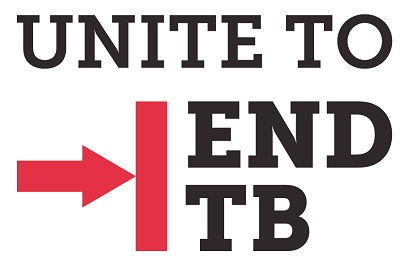Today is World TB (Tuberculosis) Day, the anniversary of the day in 1882 when the German physician Robert Koch discovered Mycobacterium tuberculosis, the bacterium that causes TB. As it has been for several thousand years, TB continues to be a serious cause of death and disability. In 2015 10.4 million people fell ill with TB and 1.8 million died. These numbers include 400,000 deaths of people living with HIV, making TB the most significant cause of death among HIV-positive people globally.
TB is especially a problem in the Asia-Pacific region, which bears 60% of the global burden of the disease. Closer to home, Papua New Guinea (PNG) has the highest rate of TB in the Pacific, and is particularly affected by multi drug-resistant (MDR) TB in Western Province (on the island of Daru) and in the National Capital District. Since standard TB treatment lasts six months – in the case of MDR-TB, a cure can take up to two years – and necessitates significant patient support, health care workers (HCWs) are vital to treatment success.
Yet HCWs – doctors, health extension officers (HEOs), nurses and community health workers – are at higher than average risk for TB. The experience of Dr Joyce Sauk, a District Medical Officer and TB survivor from PNG, certainly bears this out:
I believe I contracted TB whilst I was working in the Accidents & Emergency Department of Port Moresby General Hospital in my final year of doing Medicine in 2004. Around that time the doctor:patient ratio was around 1:5000 and competition was fierce amongst the medical students because we had only one medical school. We worked under pressure, without proper meals, rest and support.
Dr Sauk nearly quit medicine before completing her degree, an all too common occurrence in high-burden countries.
I had a mentor in one of my supervisors who encouraged me to see out my final year. He was a paediatric doctor who supported me and encouraged me to complete my final year at school. He had contracted TB twice and was a wonderful advocate amongst medical students and doctors who had TB.
TB infection control measures should be in place at all health care facilities with patients who are believed to have infectious TB. In order of importance, these control measures are of four types:
- managerial: at both national and facility levels, these measures include establishing a coordination body for TB infection control, and budgeted plans including the human resources needed to implement this infection control,
- administrative: for example the prompt triaging of people with symptoms of TB, and a range of TB prevention and care interventions for HCWs,
- environmental: measures such as ventilation systems and UV germicidal irradiation, and
- personal: protective equipment, like particulate respirators.
Managerial, administrative and environmental measures are not matters of individual responsibility but, according to the South African health care worker-run TB education and awareness community TB Proof, HCWs can advocate for them and ask questions – for instance, about isolation practices for patients with TB, and the correct use of respirators in order to protect themselves.
In reality that isn’t always the case on the ground. As Dr Sauk explains:
…TB is high amongst health care workers. A lot of our staff are afraid of working in the TB programs and wards because of the route of transmission. Not only that with the increase in resistant TB it is getting very difficult to keep health workers in TB sector. However, we do have many doctors, nurses and HEOs who are committed and they must be protected and rewarded to continue this fight against TB.
Beyond the individual implications of potential occupationally-acquired TB, there are system-level consequences as well. Already there are too few HCWs in the PNG health system. As a District Medical Officer Dr Sauk is herself responsible for over 50 patients daily including TB patients, and as the District Health Manager is responsible for over 100 clinical staff, including TB nurses.
The loss of trained personnel through either ill health or unwillingness to work due to fear of TB infection creates additional strain for those working in health care and on an already-overburdened system. Dr Sauk continues:
We do have doctors, nurses and HEOs who are committed to working with TB patients and they must be protected and rewarded to continue this fight against TB because without them we cannot even hope to win.
This fear and the need for protection is only increased by the existence of drug-resistant strains of TB, of which PNG has some of the highest rates in the Asia-Pacific. MDR-TB requires even longer, more complex treatments than drug-sensitive varieties of TB and thus more intensive commitment and investment from HCWs.
Dr Sauk concludes:
Australia has been our dominant donor for many years and I am grateful that they have helped fight TB alongside our other donors, however, the fight is not over and the threat keeps increasing.
Hearteningly, TB mortality in PNG is decreasing, but incidence (new cases) of the disease has not changed over the last decade. The theme for World TB Day 2017 is ‘Unite to End TB’. This must include a focus on supporting and protecting healthcare workers, the front line in the fight against TB.
Leila Stennett is Campaigns Director at RESULTS International (Australia) and Secretariat of the Australian TB Caucus. The Caucus is a cross-party group of Australian federal parliamentarians interested in raising awareness of the impact of TB, particularly in our region, and how Australia can secure support and expertise that contribute to the global eradication of the disease.
Dr Joyce Sauk is a District Medical Officer in Port Moresby. In January 2017, she took part in an international media training workshop for TB advocates run by ACTION, the international global health advocacy umbrella organisation of which RESULTS International (Australia) is part.



Leave a Comment